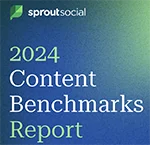Despite years-long promises to root out links to junk news or conspiracy content, Twitter hasn’t done enough to counter the spread of misinformation on its platform, according to a report released by the Knight Foundation that sought to analyze how the fake news phenomenon has evolved in the last two years.
The Knight study analyzed 10 million tweets from 700,000 Twitter accounts linking to more than 600 fake news or conspiracy outlets both during and after the 2016 U.S. presidential election (a list of sites taken from online database OpenSources was used to determine what sources were considered publishers of “fake” content).
 |
The report tallied about 6.6 million tweets linking to fake news or conspiracy sites in the month leading up to the election. While Twitter vowed to stamp out fake content in light of Kremlin-backed organizations’ use of the platform during the 2016 presidential election, the Knight report found that about four in five fake accounts that were active during the election — or 80 percent — remain active today. According to the report, these fake accounts continue to publish more than a million tweets on a typical day.
The report also found that the same usual suspects accounted for most of the misinformation plaguing the site: 65 percent of the links researchers identified as fake during the election period came from the same 10 news sites, and 89 percent of links came from the top 50 fake sites. This phenomenon remained virtually unchanged six months after the election, where nine of the top 10 fake news sites analyzed remained in or near the top 10. The report also discovered more than a third of the most-followed accounts revealed evidence of using bots.
Finally, while the report determined the majority of fake content came from pro-Republican and pro-Trump accounts (particularly in the month before the election), a “smaller but still substantial” amount of fake news also came from liberal or Democratic-identified accounts as well. After the election, however, the prevalence of left-leaning fake content went down markedly in comparison to right-leaning fake content.
An Oxford University study released earlier this year found that Trump supporters were responsible for sharing 95 percent of Twitter’s junk content. Another recent Knight Foundation survey found that major Internet companies aren’t doing nearly enough to identify and stop the spread of fake news that appears on their platforms.
Twitter issued a statement disputing Knight’s findings, claiming that the study was conducted using Twitter’s public API, and therefore, “does not take into account any of the actions we take to remove automated or spammy content and accounts from being viewed by people on Twitter.”
The Knight report, “Disinformation, Fake New and Influence Campaigns on Twitter,” was produced by George Washington University and social media marketing and analytics firm Graphika.


 What if companies could harness the fury of online outrage into a force for good? This is precisely where companies can start turning the trolls into brand champions.
What if companies could harness the fury of online outrage into a force for good? This is precisely where companies can start turning the trolls into brand champions. Audiences interacted with brand content far more often on Facebook and Instagram in 2023 than they did via X (formerly Twitter), according to a report that tracked engagement trends across different social networks.
Audiences interacted with brand content far more often on Facebook and Instagram in 2023 than they did via X (formerly Twitter), according to a report that tracked engagement trends across different social networks. Can public relations help counteract the dissension fostered by the power of digital platforms to spread hate, fear and confusion?
Can public relations help counteract the dissension fostered by the power of digital platforms to spread hate, fear and confusion? The number of Americans who get their news from TikTok has quadrupled in the last three years, according to a recent Pew Research Center report.
The number of Americans who get their news from TikTok has quadrupled in the last three years, according to a recent Pew Research Center report.


 Have a comment? Send it to
Have a comment? Send it to 
No comments have been submitted for this story yet.